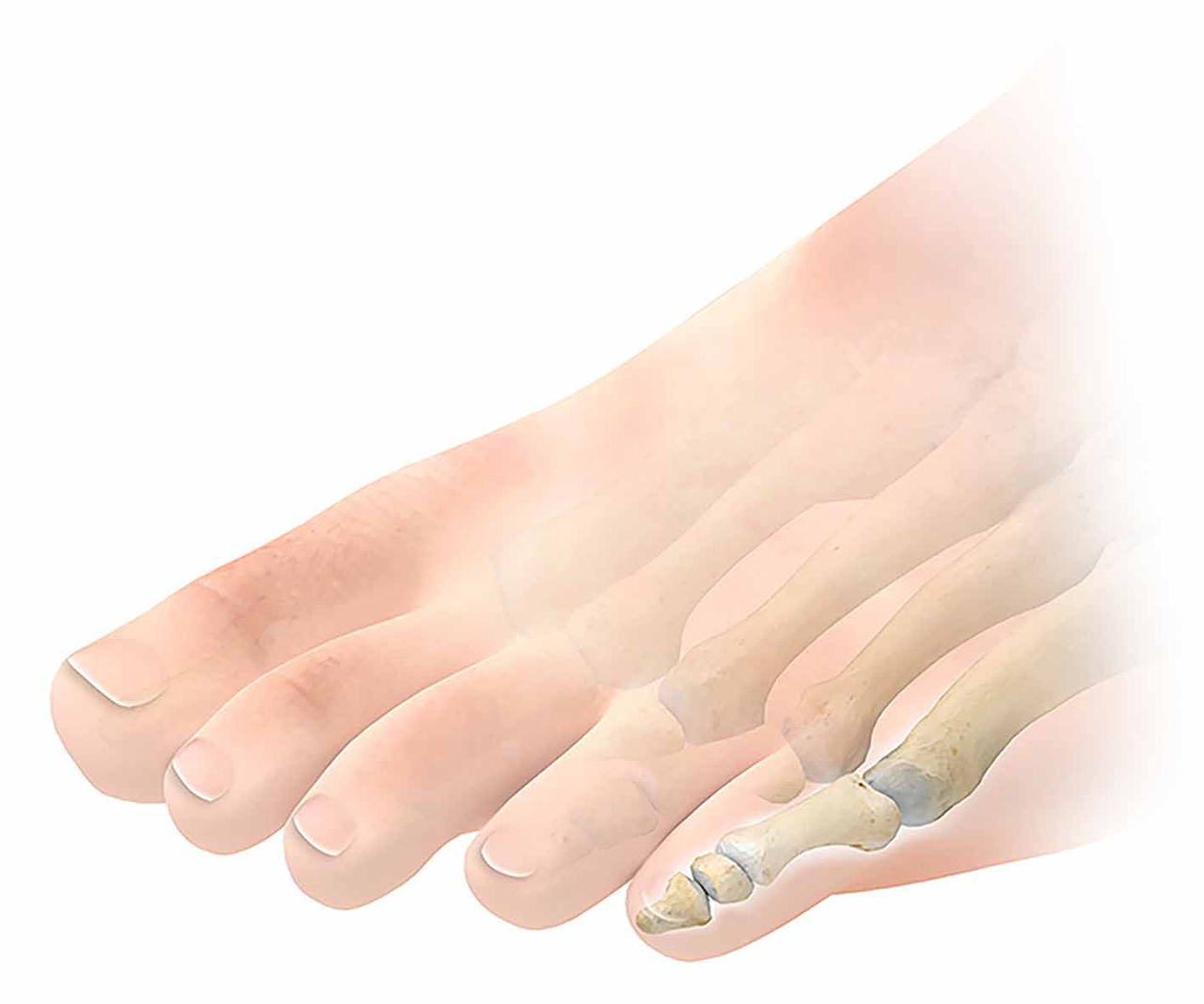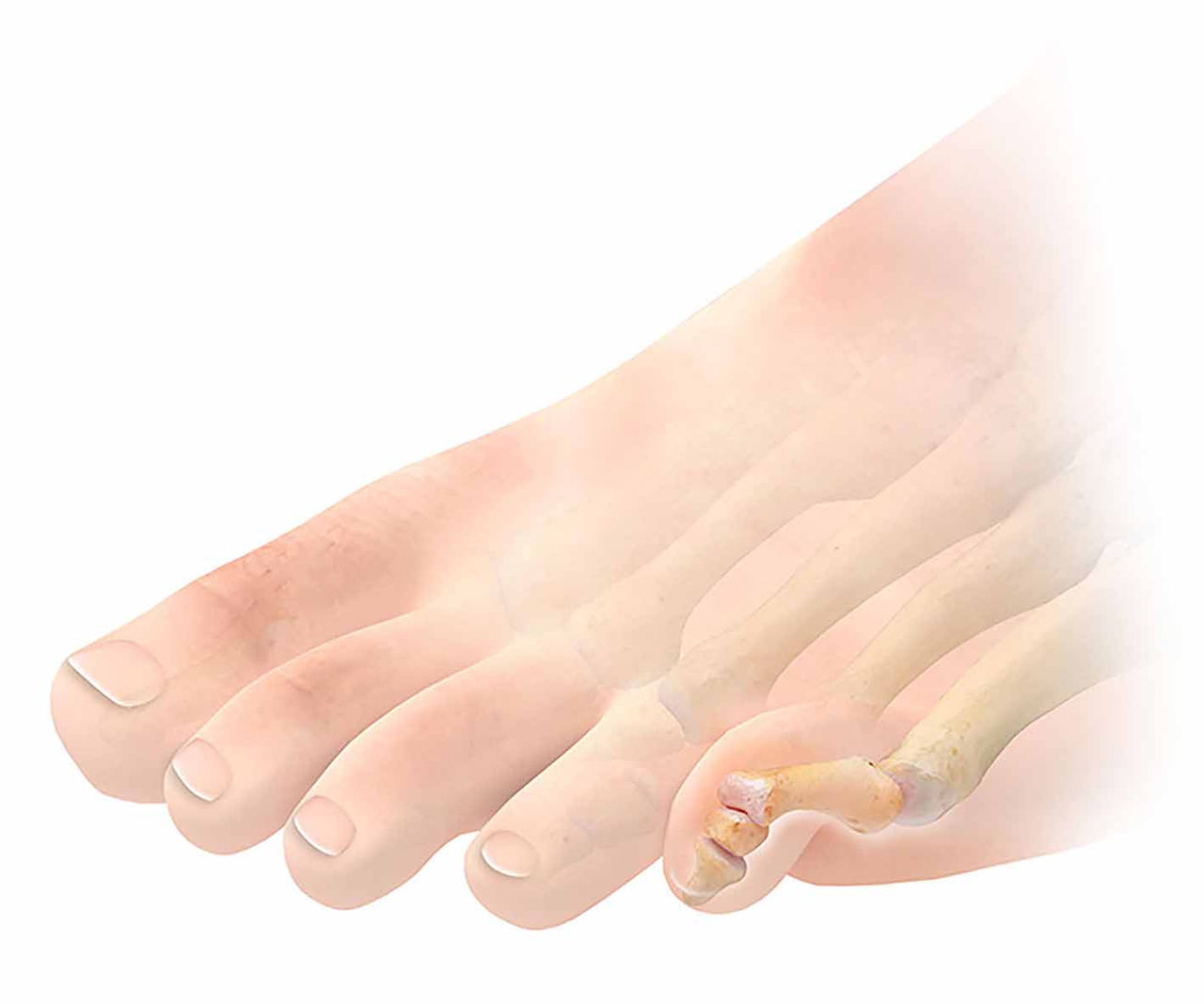What to Expect During Hammer Toe Surgery
Knowing what’s going to happen during surgery may help you prepare. Here, Dr. Lee shares what a ‘typical’ hammer toe surgery might be like.
Knowing what’s going to happen during surgery may help you prepare. Here, Dr. Lee shares what a ‘typical’ hammer toe surgery might be like.
Hammer toes most often occur in the lesser toes (digits 2-5) than the big toe. They’re caused by a muscle-tendon imbalance that causes the joint (or joints) in the toes to contract (bend). This contracture causes the toe to sit funny, and rub against our shoes or hit the ground too hard. Early in the deformity, the toe can still straighten. After time, the toe becomes rigid or stuck in the curled position.
 Healthy
Healthy
 Hammer Toe
Hammer Toe
There are many different ways to correct hammer toes. The type of procedure selected to fix your hammer toe will often dictate your post-operative recovery. Because hammer toes are often seen with bunions, your recovery could be dependent on whether or not the bunion is corrected at the same time. Your surgeon should be able to answer all of your questions regarding managing your recovery expectations.
Generally speaking, a pin (k-wire) will be implanted to hold your toe straight. This plays a critical role in how quickly you can get back into a regular shoe or sneaker. You will likely wear a boot or surgical shoe for 2-6 weeks. You may or may not need crutches or a knee scooter (if so, this is likely because of a concurrent bunion surgery). You will have a dressing on your foot that needs to stay dry and clean for 1-2 weeks. Your surgeon will give you detailed instructions of his/her plans for your foot after surgery during the pre-operative visit and at the time of surgery.
While every surgeon and experience is different, as a general rule you can expect the following:
1. You will likely be told not to eat or drink after midnight the day before surgery.
2. You’ll need to arrive at the hospital or surgery center 1 to 2 hours before surgery where you will check in, sign paperwork (including consents for surgery), and change into a hospital gown.
3. An IV will be inserted into your arm so that you can receive fluids and antibiotics for surgery.
4. You will meet your anesthesiologist and discuss your options for anesthesia.
5. Once you are in the operating room, you will be sedated or asleep. Your foot will prepped (cleaned) and sterile drapes will be placed around it.
6. Your surgeon will then complete your hammer toe(s) procedure. In many cases, internal fixation (metal screws or devices – also called hardware or implants) will be inserted to help hold the new position of the bones throughout the healing process. At some point, this hardware may need to be surgically removed.
7. The skin will be sutured closed and a dressing will be placed around your foot. After this, the anesthesiologist will wake you up. You’ll be transitioned to a recovery room until you are fully awake.
8. Before leaving, your doctor and nurses will review instructions for your care after surgery. They will also instruct you about walking or using crutches, a walker, or a knee scooter.
9. In many cases, the k-wire (pin) sticking out of your toe(s) will need to be cared for and protected. Your surgeon will give specific instructions for how to care for these pins.
10. Some pain is normal after hammer toe surgery. Your surgeon will likely inject a local anesthetic (numbing medicine) into your foot once your surgery is complete, before he/she leaves the operating room. Pain medicine will be given for the recovery process, and you may be instructed on using ice and keeping your foot elevated.
11. In some situations, your surgeon may have you use a blood thinner to prevent a blood clot in your leg, although this is highly dependent on your surgeon’s preference, your medical history, and the type of hammer toe surgery performed.